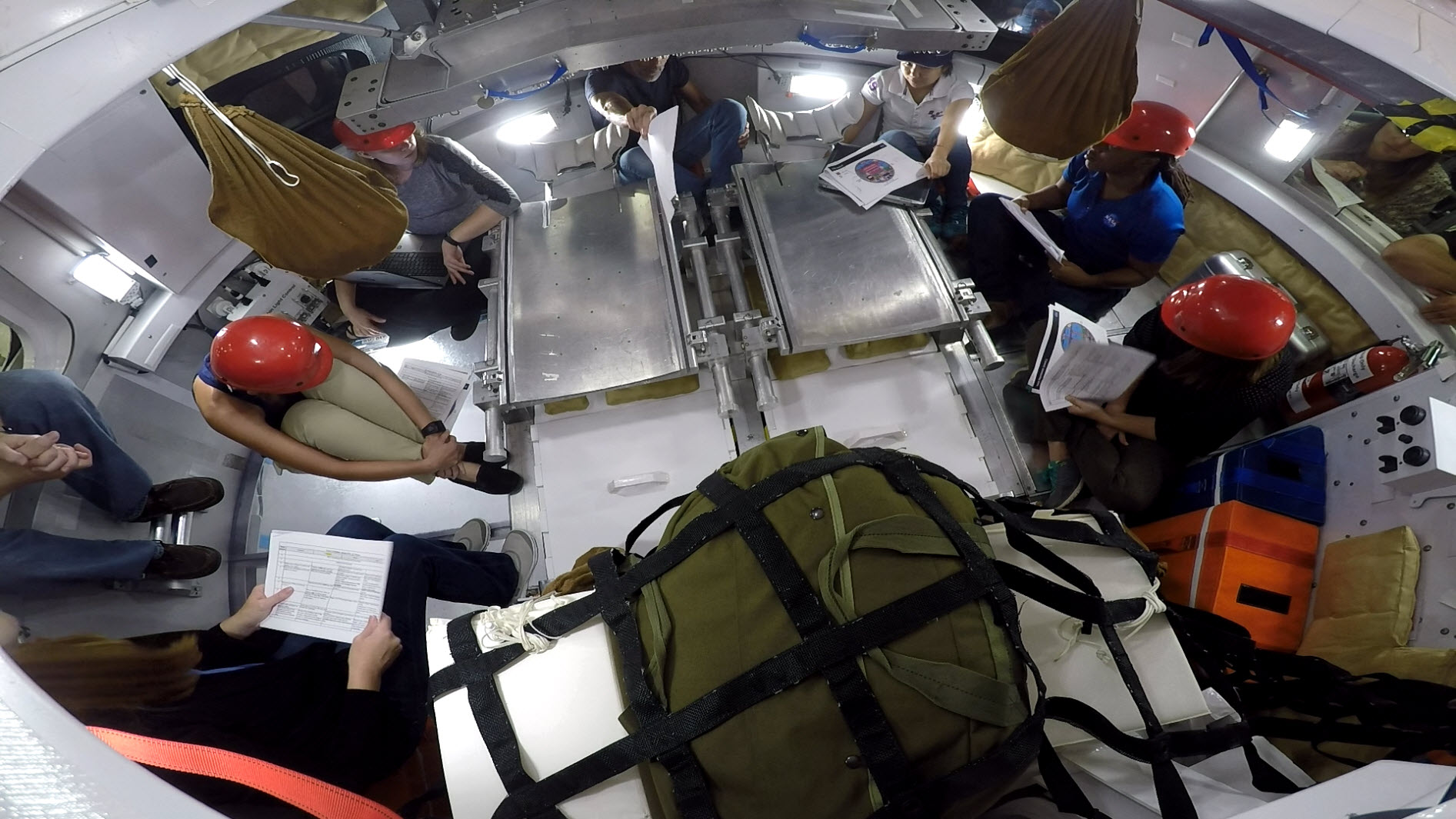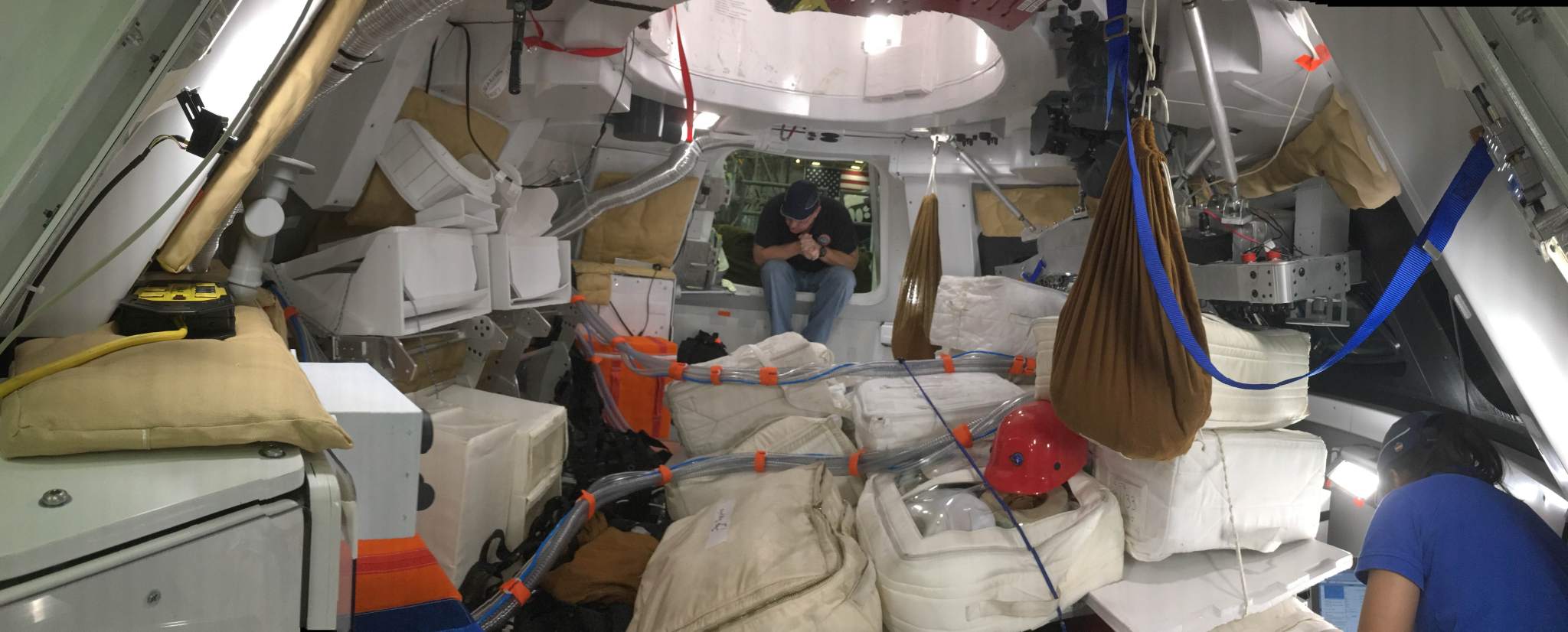When astronauts in Orion venture far beyond Earth into deep space, they will expand humanity’s frontier and push the boundaries of exploration. While the spacecraft is designed with systems and materials to keep the crew safe during their journey, leaving the protection of Earth’s magnetosphere exposes astronauts to a radiation environment in space that scientists and engineers at Johnson Space Center in Houston are working hard to protect against.
NASA works to protect astronauts from radiation and limit their exposure over time because chronic effects can, for example, include an increased risk of cancer. To limit risks in Orion, the team is developing a way to make use of the mass on board the spacecraft to protect the crew and recently conducted evaluations at Johnson to test procedures for getting astronauts into their protective environment as quickly as possible.
“Our goal is to limit the risk of radiation exposure over an astronaut’s lifetime,” said Kerry Lee, radiation system manager for Orion. “It’s not likely you’d see acute effects of radiation during a mission or immediately upon return, but we are concerned about long term effects. Our work aims to mitigate risks due to radiation without adding mass to the vehicle.”
Orion will be equipped with a radiation-sensing instrument integrated into the vehicle called the Hybrid Electronic Radiation Assessor, or HERA, to provide a warning if crew members need to take shelter in the case of a radiation event, such as a solar flare. To protect themselves, astronauts will position themselves in the central part of the crew module largely reserved for storing items they’ll need during flight and create a shelter using the stowage bags on board. The method protects the crew by increasing mass directly surrounding them, and therefore making a denser environment that solar particles would have to travel through, while not adding mass to the crew module itself.
If the warning were to sound, the crew would create the shelter within an hour and in some cases would need to stay inside for as long as 24 hours. Using the stowage bags on board that will contain supplies, food and water, in combination with Orion’s seats will allow astronauts making the shelter to strategically place denser bags in areas of the vehicle with less radiation-protecting materials. For example, the bottom of Orion where the heat shield and service module are attached will provide more shielding than other areas, and stowage bags can be used for parts of the spacecraft’s interior with less shielding.
“A big part of the evaluation was assessing how coordinated the crew could be given the procedures we’re establishing for them,” said Jessica Vos, deputy health and medical technical authority for Orion. “The real meat of it was evaluating how effective we could be with our procedures given that the crew may not have a lot of warning.”
The evaluation also included assessing ways to tie down the stowage bags, where to locate tubing to provide air to the shelter and the best ways to get in and out of it. After evaluating test results, NASA will further develop the procedures and conduct additional testing.
Orion will launch atop NASA’s powerful Space Launch System rocket to deep space destinations on NASA’s journey to Mars. It’s first mission, Exploration Mission-1, will send an uncrewed Orion about 40,000 miles beyond the moon in late 2018.
























